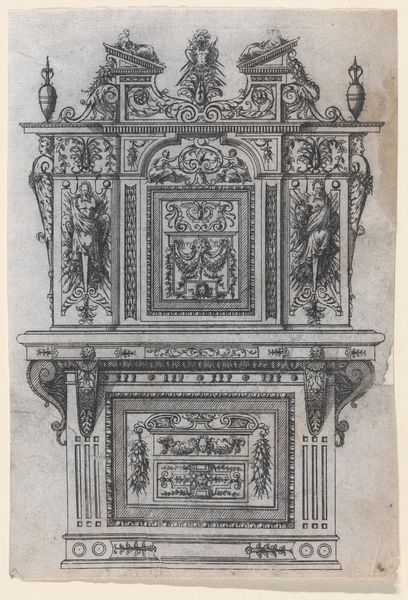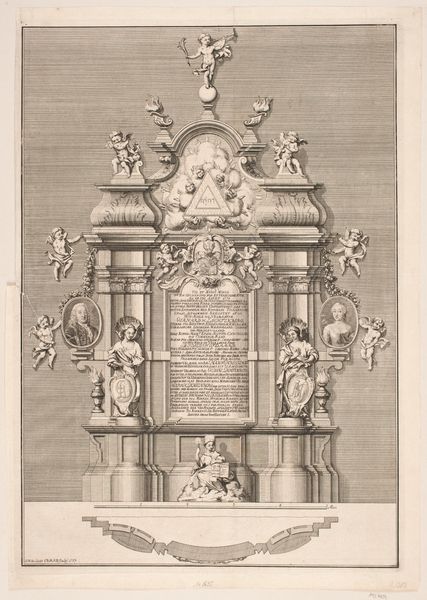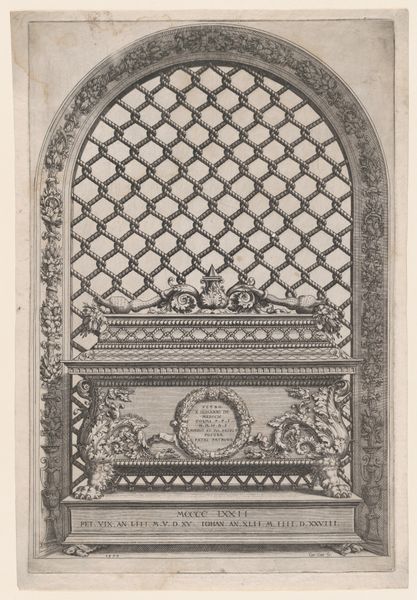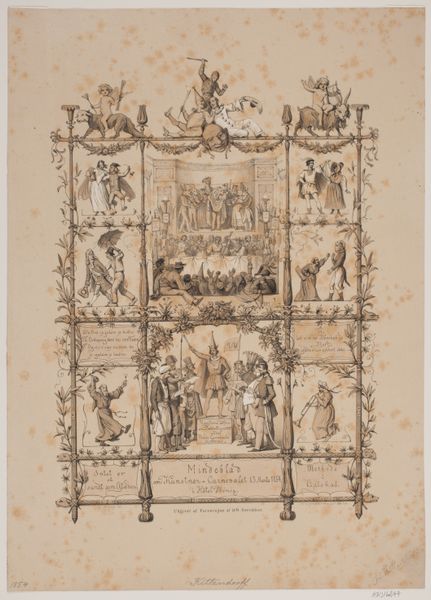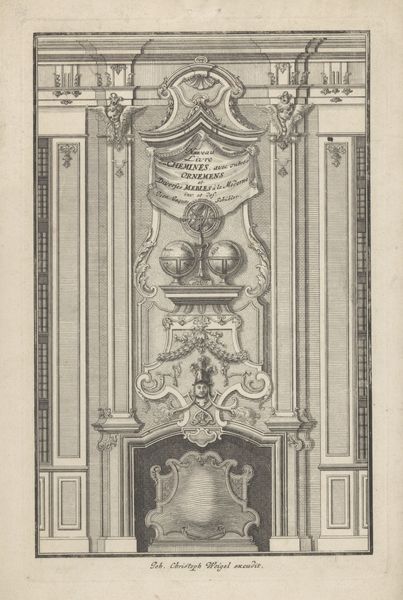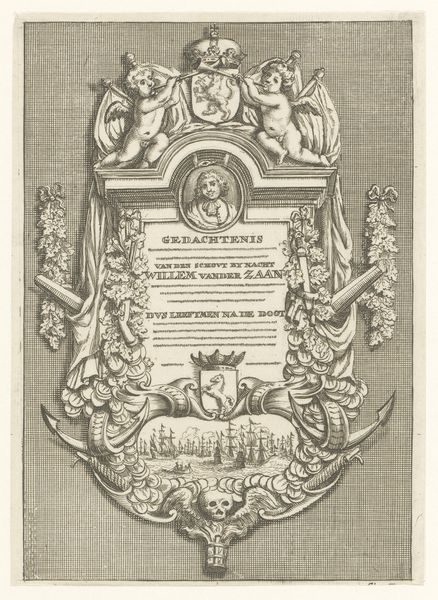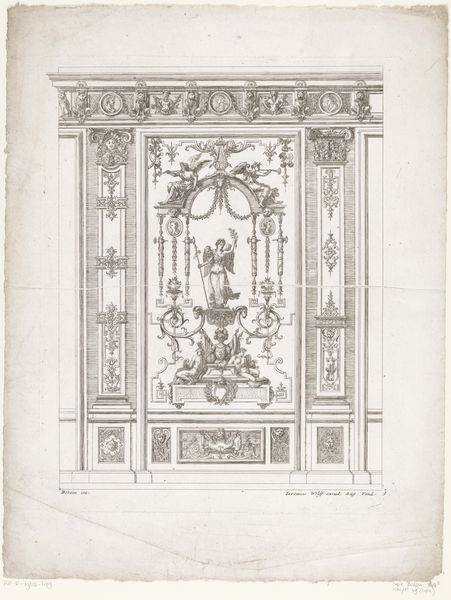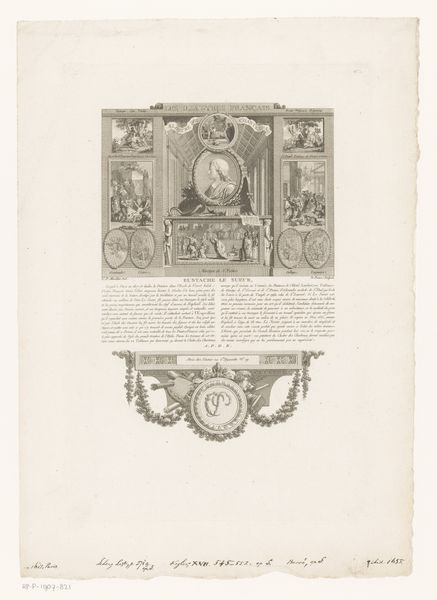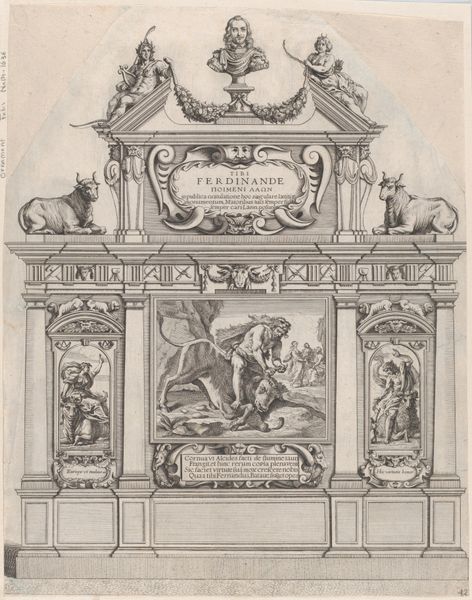
drawing, graphic-art, print, engraving
#
drawing
#
graphic-art
#
pen drawing
# print
#
pen illustration
#
old engraving style
#
landscape
#
11_renaissance
#
northern-renaissance
#
engraving
Dimensions: height 309 mm, width 200 mm
Copyright: Rijks Museum: Open Domain
Willem van Swanenburg created this engraving, "Kruidentuin met fontein," sometime between 1581 and 1612. This meticulously rendered garden scene, framed by classical architectural elements, reflects the intersection of nature, knowledge, and societal status during the Renaissance. The image suggests the formal gardens, popular amongst the elite, were not just spaces of leisure but also sites of scientific exploration and control over the natural world. As Europeans expanded their reach through global trade, botany emerged as a crucial field, intertwining scientific discovery with economic and colonial ambitions. The fountain, a symbol of cultivated nature, stands as a focal point. Around the edge of the image are the names Rembertus Dodonaeus and Carolus Clusius, both significant botanists of the era. Reflect on how this image encapsulates the period's desire to classify and control nature, reflecting a broader narrative of power, discovery, and the evolving relationship between humans and the environment.
Comments
No comments
Be the first to comment and join the conversation on the ultimate creative platform.
